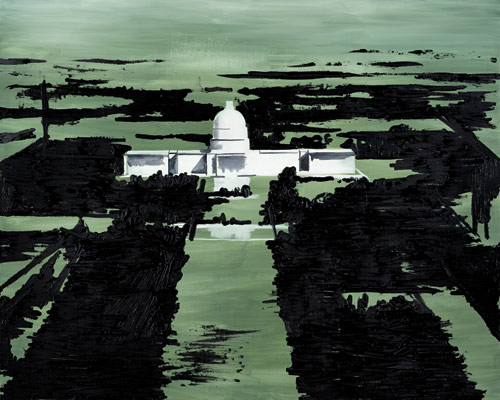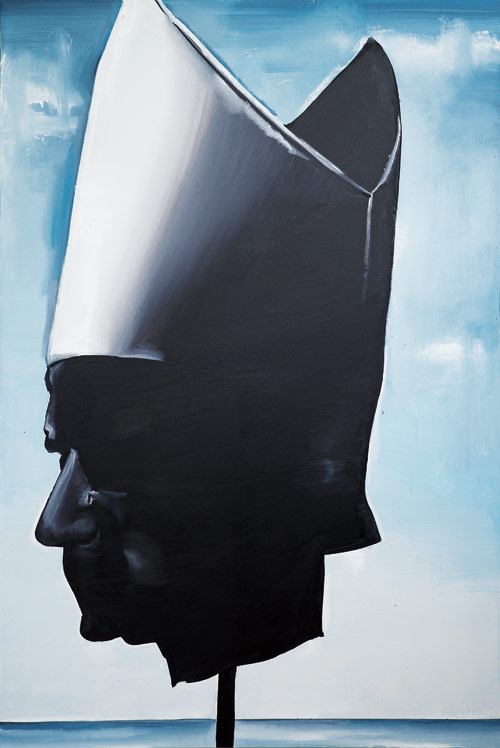2004-2014
Wilhelm Sasnal
Rendered in a dark palette of greys, blues and greens, Wilhelm Sasnal’s paintings at the 31st Bienal reflect upon the sombre legacy of colonialism. Copernicus (2004) and Christopher Columbus Tomb (2009) both depict public monuments celebrating the discoveries that shaped the modern world and fuelled the West’s unquenchable thirst for conquest. Although apparently suspended in mid-air, the armillary sphere in Copernicus is hardly ethereal: like the compass barely discernible to its left, it is part of a nineteenth-century bronze sculpture of the astronomer, whose body Sasnal has concealed behind a cloud of white paint.

His painting of Columbus’s burial memorial in Seville’s cathedral similarly subverts the sculpture’s original meaning: detached from its sacred setting and stripped of all ornamentation, this tribute to the man who ‘discovered’ the Americas becomes an elegy for the millions who died during the brutal colonisation that followed.
That the prejudiced views of the other used to legitimate such a massacre are not yet dead and buried becomes apparent in Untitled (2010) and Untitled (Mine) (2009), each depicting two anonymous, dark-skinned men cutting trees or digging in mines. Inspired by black-and-white illustrations from a 1970s geography book for children, the paintings are scarce in their details, with characters reduced to mere types and any reference to time or place suppressed. If they appear out of time, it is perhaps because they speak to the protracted exploitation of natural resources and human labour that links today’s economic colonialism to the illustrious discoveries of the modern era.

Decidedly iconoclastic, Untitled (2013) and Capitol (2009) can be seen to react against these overtly archetypical representations. Rather than reigning over the dubious achievements of missionary Catholicism, the mitre-crowned bust of a Polish archbishop is here impaled on a pike and turned into a trophy of war. The gleaming US Capitol building, on the other hand, sits uncomfortably in the eerie landscape over which it presides, the rest of Washington’s neoclassical architecture having been redacted with black paint – perhaps an allusion to the racial inequality that runs deep in today’s wavering imperial centre. – HV




